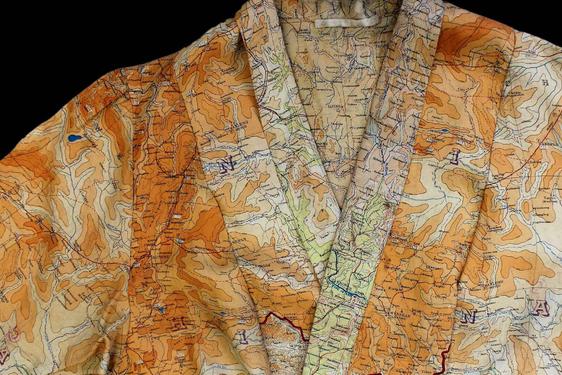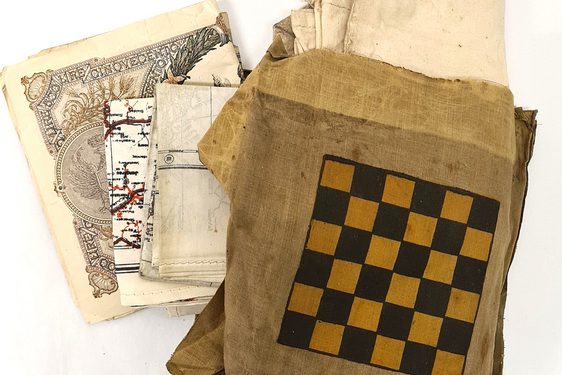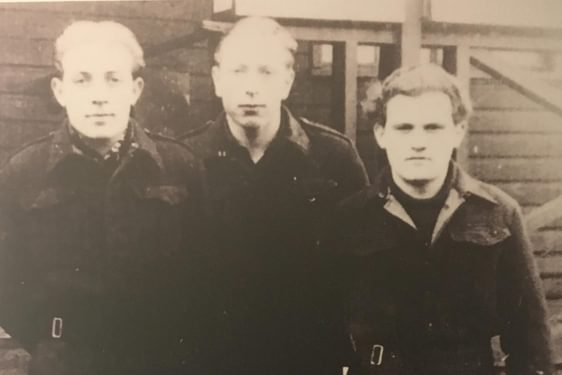
Souvenirs of service: Mementoes from the First and Second World Wars
News Story
We all collect souvenirs throughout our lives connected to different people, places and events. Whether this is items from our childhood, holidays and travel, or objects connected to our jobs.
The memories connected to these souvenirs are even more potent for those who serve during times of war and are often kept as family heirlooms. 2025 marks the 80th anniversary of the end of the Second World War and every year the end of the First World War is marked on Armistice Day on 11 November. These objects were collected as souvenirs of service in both the First and Second World Wars.
1. A picture of memorabilia
‘Father’s Memorabilia, North West Europe’, is one of two paintings by Joyce W Cairns. It depicts souvenirs of her father, Major Robert W Cairns MBE, from the Second World War. These items were kept in a battered suitcase and Joyce recalls how her father spoke only occasionally of the war. These physical mementoes were a window into his experiences. The objects included uniforms, an ID card, a map, postcards, photos, a plaque, archives and medals.
The photo of an Alsatian recalls Villette, an injured dog that Major Cairns rescued in France in 1944. A silk map represents the places he travelled. There are postcards depicting caricatures of Adolf Hitler and Winston Churchill. These show how humour was essential to keeping up spirits. The wooden plaque shows pride in his role within the Military Police at the victory in Bremen in 1945.

‘Father’s Memorabilia, North West Europe’, by Joyce W Cairns PPRSA, 1995. Museum reference:
M.2006.3.2
2. Bayonet and scabbard
Artist and curator Captain Archibald Eliot Haswell Miller served in both the First and Second World Wars. He collected, observed and drew weapons and uniform from across the world during his military service. The illustrations in his book were inspired by his experiences and based on items he collected on his travels.
This bayonet was taken by Haswell Miller at the capture of Wadi el Hesi in Palestine in 1917. It is German-made and was carried by a Turkish soldier in the Ottoman army. Although this battle was a victory for the British army’s Egyptian Expeditionary Force, they suffered 700 casualties. This bayonet was possibly kept by Haswell Miller as a souvenir of the victory. However, he also valued it as evidence of pre-1917 German uniform for his artistic research.
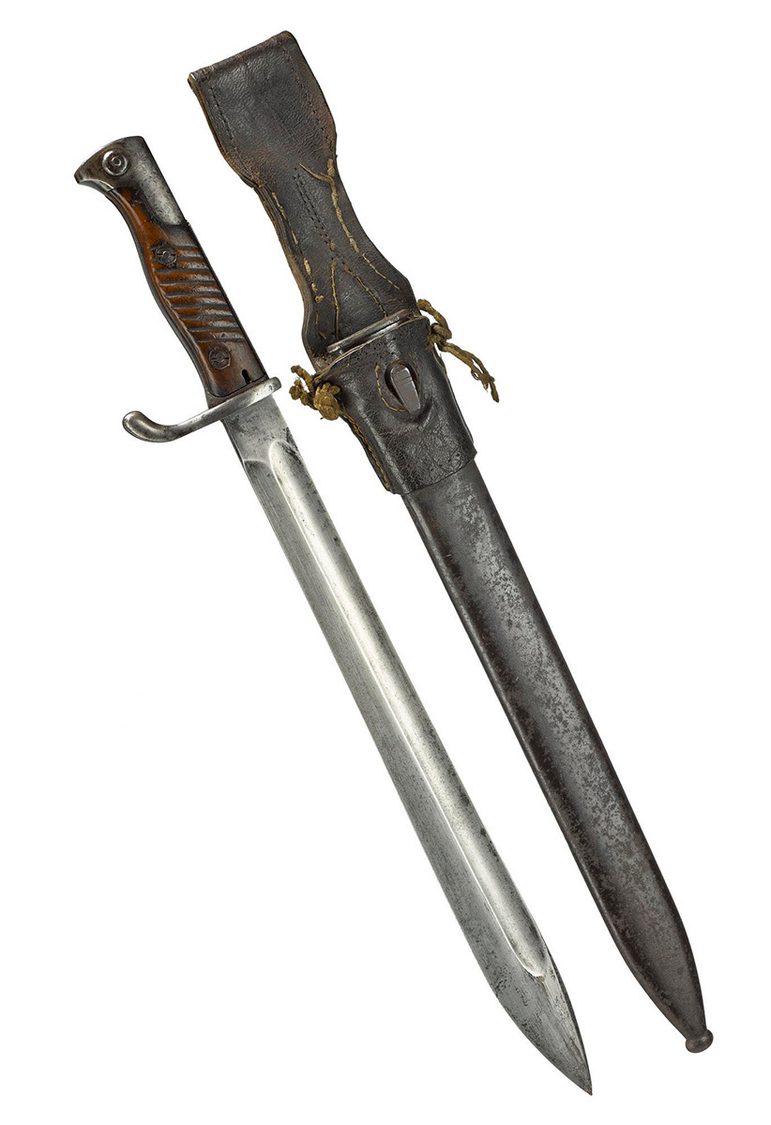
Bayonet and scabbard carried by a Turkish soldier at Wadi El Hesi, Palestine, November 1917, taken as a souvenir by Captain A.E. Haswell-Miller, 7th Battalion Highland Light Infantry, German-made, pre 1917. Museum reference: M.1930.1335.2
3. Memories of everyday service
Military service brought experiences of danger, boredom, frustration or privations. But it also provided a strong sense of shared belonging. In military environments, comrades were like a surrogate family. Memories of shared experiences remained meaningful for many veterans.
Private Henry (Harry) Hubbard enlisted in the 9th Battalion Highland Light Infantry at the beginning of the First World War. His first winter in the trenches resulted in carbuncles, a poisoned leg and jaundice. As a result, he was sent to England for medical treatment in 1915 and was honourably discharged from active service 16 months later. Despite these experiences, Hubbard kept objects from the eight months he was serving. This includes a sewing kit (also known as a housewife), his glengarry, a kit bag and a diary . They were important reminders of what he had endured, the people he served with, as well as being souvenirs of the everyday life of being a soldier.
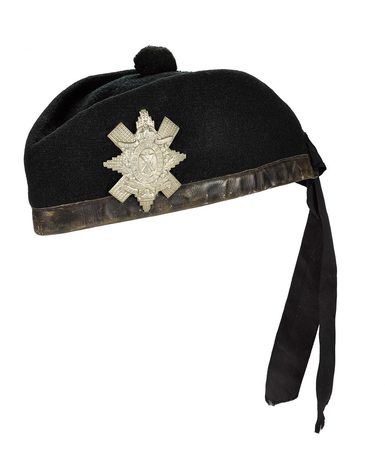
Glengarry with a cap badge, worn by Harry Hubbard, Glasgow Highlanders, First World War. Museum reference: M.1993.402.8
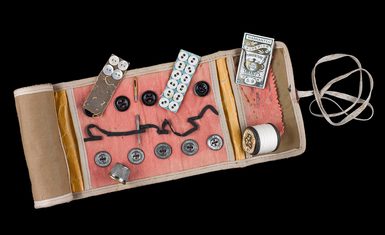
Soldier's 'housewife' with contents, used by Harry Hubbard, Glasgow Highlanders, First World War. Museum reference: M.1993.402.6
4. A brush with death
Items associated with a brush with death were (and are) common souvenirs of service. They are physical witnesses of dramatic, life-threatening experiences. They become souvenirs of survival for those who kept them. This fragment of shell still has a scrap of uniform trousers attached to it. It was kept as a souvenir of when the Reverend Ian Dunlop was wounded in Germany on 15 February 1945. Dunlop was serving as an army chaplain to the 10th Battalion of the Highland Light Infantry at the time.
Many people who served in both world wars collected bullets and shrapnel connected to their own injuries or picked up on battlefields. Some were kept by soldiers throughout their service and were believed to be lucky charms or talismans. The metal waste of war was repurposed to bring hope and protection. These souvenirs were then brought home and became important reminders of the death they escaped.
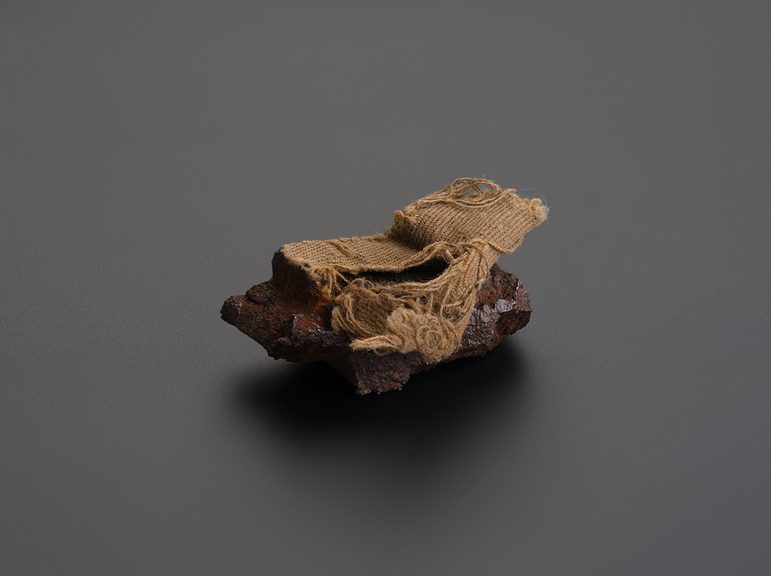
One of a group of items associated with the service of the Reverend Alexander Ian Dunlop, Chaplain, 1942-1945 - fragment of shell, retaining scrap of uniform trousers, that wounded Dunlop, south of Moyland, Germany on 15 February 1945. Museum reference: M.2007.25.1
5. Healthcare workers on the front line
Some souvenirs of survival were gifted to the nurses and doctors who helped in a soldier’s recovery. This arrowhead was picked up in Kut, Mesopotamia (modern day Iraq) in 1916. It was given to Sister Annie Maria Locke who served with Queen Alexandra’s Imperial Military Nursing Service. She kept items such as this that had been collected by wounded soldiers under her care and given to her as gifts. They were souvenirs of her own experiences in the hospitals.
Nursing was one of the jobs that took women to the battlefront during the First World War. There they saw first-hand the damage done by modern weaponry. These souvenirs were reminders of the people she had saved and her important role on the front lines. Sister Locke also kept a biscuit as a reminder of her own survival. This marks the time when her hospital was rapidly evacuated from Rouen to Nantes when the Allies retreated in August 1914.
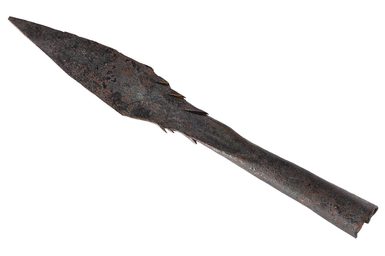
Arrowhead from behind the reserve lines at Kut, Mesopotamia, 1916, given to Sister Annie Maria Locke, Queen Alexandra's Imperial Military Nursing Service, First World War. Museum reference: M.2002.163.3.
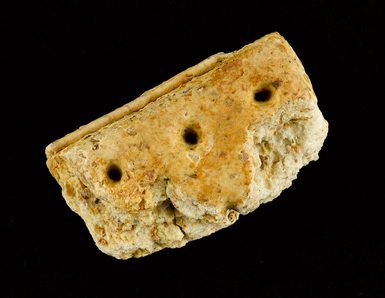
Piece of biscuit given to 9 General Hospital during retreat from Rouen in 1914. Given to Sister Annie Maria Locke, Queen Alexandra's Imperial Military Nursing Service, First World War. Museum reference: M.2002.163.2
6. Mapping experiences
During the Second World War people travelled all over the world to mobile and ever changing battlefronts. During their travels, people drew sketches, painted watercolours and took photographs to keep as souvenirs. People also kept maps as souvenirs of their global experiences.
Brigadier Norman Macdonald CBE joined the Indian Army in 1917 and served in Southeast Asia during both world wars. He used maps during the Second World War to plan offensives and track supply and troop movements in ‘Burma’ (modern day Myanmar). Along with his uniform, diary and photographs, Macdonald kept a selection of maps as souvenirs of his military service. These maps were visible reminders of the places he served and the events that occurred there.
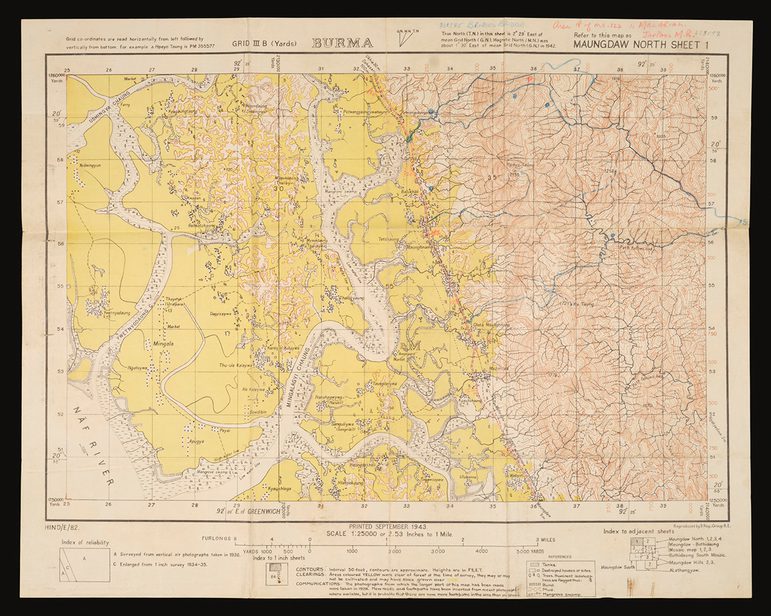
Map titled 'Burma' scale 2.53 inches to 1 mile or 1:25000, map reads: 'Refer to this map as MAUNGDAW North Sheet 1, HIND/E/82, surveyed from vertical air photographs taken in 1938'. Owned by Brigadier Norman Macdonald. Briasco Bridge routes have been marked in blue pencil. Museum reference: M.2003.126.28.10
Written by

Dr Julie Holder
Assistant Curator, Modern and Contemporary History
